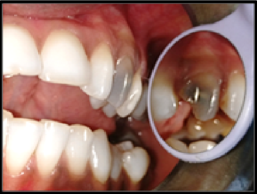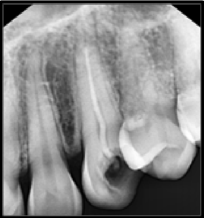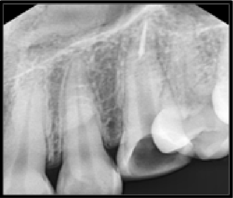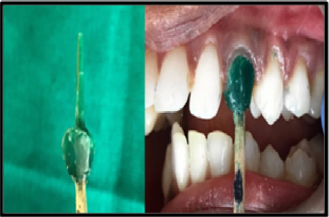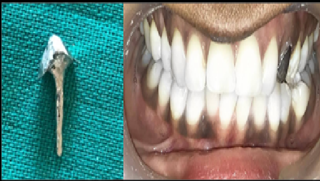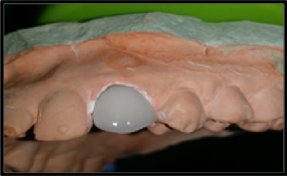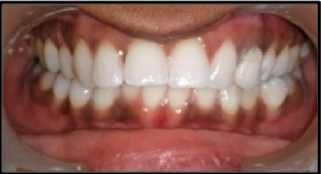Introduction
While picking a choice for a suitable post-endodontic restorative material, grossly decayed tooth having minimal coronal portion left either as a result of previous huge reclamation or a broad access opening while struggling in locating the orifice, often times present with a number of challenges.1 Clinicians consistently face the situation whether to have a thing about selecting a post. Again, there is disarray whether to go for custom cast post or pre-fabricated post. As indicated by Franklin Weine, the greater part of the root canal treated teeth regularly waned after endodontic treatment attributable to hopeless post endodontic reclamation instead of essential endodontic reason.2
While selecting a suitable post-endodontic remedial material, several conditions must be remembered including extent of coronal structure remaining, utilitarian necessities of the tooth, aesthetic requirements, age and the periodontal status of the patient.3
In the only remaining century, custom made cast metal post spoke to the technique for decision in the way of thinking of recreating the endodontically treated tooth. The system normally included the utilization of porcelain combined to metal crown that means cast posts are used in concurrence with porcelain-fused to metal (PFM) summit. In general, admissible aesthetic outcome is provided by fusing the core of cast metal post and core system with ceramic.
To mask the greyish appearance of oxidized subsurface of metal, an opaque layer of porcelain is required once the casting is done, scilicet is reflective eminently. Anyway, light could enter through any aspect of the natural teeth and its surrounding tissues, so this reflection isn't found in normal teeth. The biggest advantage is gaining the supremacy of both metal and ceramic in terms of strength and aesthetic, both altogether.4
This paper reports a case where endodontic retreatment followed by restoration with a ceramic coated cast post was carried out mainly due to the aesthetic priority of the patient.
Case Description
A 25 years old female patient reported in the Department of Conservative Dentistry and Endodontics with the chief complaint of decayed and discoloured teeth in her upper front tooth region for 2 years. Patient wanted rectification in her aesthetics. Past dental history of the patient revealed that she underwent root canal treatment for the concerned tooth 3 years back. Medical, social and personal history of the patient was found to be inconsequential. The discoveries of the extra-oral examination were all inside ordinary cut off points. Periodontal assessment uncovered great oral cleanliness and gingival health during examination.
Intraoral examination showed grossly decayed and discoloured maxillary left canine#23. (Figure 1) Radiographic examination confirmed previous root canal treatment and deficient obturation in the concerned tooth #23. (Figure 2)
Patient’s maxillary anterior teeth were labially proclined and deep bite malocclusion was present. Patient was advised to go for orthodontic correction but she decided to postpone it due to money restraint. Root canal retreatment followed by post endodontic restoration with porcelain masked cast metal post and core and all ceramic crown prostheses was planned. Treatment plan was discussed with the patient and informed consent was taken. Carious tooth structure was removed, previous gutta percha cones were retrieved from the canal and working length was confirmed using 20k file. Biomechanical preparation of the canal was completed using K files and H files following the step back technique. 3% sodium hypochlorite, 17% ethylene diaminetetraacetic acid (EDTA) and normal saline were used for irrigating the canals after each file. Sectional obturation was done till 6mm of the apical third of the root length. Canal was obturated using the lateral condensation technique and after the obturation, canal was sealed with temporary restorative material (3M Espe Cavit - G). During the next appointment, making the use of the peeso reamer up to number 4 to a depth of 15.5 mm, the root diameter was enlarged with the control of rubber stoppers that were adapted to the reamers. (Figure 3) A cervical ferrule preparation was done with dimension of 2 mm height, 1mm width and 2-4 degree taper. Using the direct technique, the post and core wax pattern was fabricated (Figure 4) and rubber base impression material (Zhermack Zetaplus) was used to make the impression for laboratory work. Metal casting was done with cast metal alloy (79.3% copper, 7.8% aluminium, 4.3% nickel). (Figure 5) and an opaque porcelain layer was applied on the core portion. (Figure 6) The luting of custom made ceramic infused post and core was done with suitable luting cement. (Figure 7) Prostheses planning were postponed till the orthodontic treatment of the patient continued.
Discussion
Esthetic reestablishments of upper foremost teeth are constantly viewed as a significant challenge. The complexity of every esthetic case is relatively expanded on the grounds that several dental orders are involved in the administration of a deteriorated smile.5
The life span of endodontically treated teeth has been extraordinarily upgraded by proceeding with improvements made in endodontic treatment and restorative systems. It has been accounted for that an enormous number of endodontically treated teeth are re-established to their unique function with the utilization of intra-radicular instruments and restorative materials. These materials change from a traditional customised cast post and core to one visit strategies, utilizing pre-fabricated post and core systems. Over the most recent couple of many years, numerous pre-fabricated post and core systems have been developed. The choice of post configuration is significant, in light of the fact that it might have an effect on the life span of the tooth.6
A huge aspect of the writing looked into underscores the pressure appropriation during post insertion and during masticatory function. Various elements including length, diameter, material, flexibility, configuration, biocompatibility of post, measure of residual dentin, luting cement, treatment plan and forces acting on restored tooth, are likewise found to impact the fracture resistance of a recreated tooth. Of the apparent multitude of variables counted, core design, occlusal loads, and role of the treated tooth in various functions are found to have direct effect on the life span of the re-established tooth.7
Customarily, titanium, carbon, polyethylene fiber, and tempered steel posts are utilized for the front region.8, 9, 10 Nonetheless, when all-ceramic rebuilding efforts are liked, metal posts may contrarily influence the tasteful results.11 To beat the detriments of metallic posts, a wide scope of esthetic posts have gotten industrially accessible, for example fiber reinforced composite resin posts (FRC) and yttrium stabilized zirconia-based ceramic posts.12
Past investigations have discovered that the basic tooth structure impacts the presence of the ceramic restoration.13, 14 Appropriately, a clinician ought to think about this issue when treating such cases. The shade of the substrate impacts the final debut of the ceramic restoration. Clinical circumstances of stained teeth or dim hued abutments can be covered with a ceramic layer that will improve the result of the ultimate restoration on the top and give an incredible aesthetic result.15
In the present case due to economical issue of the patient being a student, a cast metal post and core system was planned. Giving priority to the esthetic concern of the patient, the displeasing grayish hue of the metallic core was masked with the opaque porcelain coating.
The treatment of the upper foremost teeth could be convoluted by numerous elements. These variables incorporate, however are not restricted to, teeth shape and size discrepancy, old defective restorations, malalignment, and unpleasant gingival contour.5
Therefore, an extensive and nitty gritty treatment plan is critical to distinguishing both esthetic and functional requirements with the treatment. The utilization of a wax-up, comprehensive facial and dental esthetic investigations, and accomplished correspondence with the lab specialist are needed to execute the most promising esthetic results.16
Conclusion
In the present era, the stipulation for all ceramic restoration is rising as a result of expanding esthetic concern among population. An underlying metallic core present with the greater obstruction in obtaining the ultimate esthetic upshot of all ceramic restoration. Accordingly, treating such cases requires modification to hide the metallic hue of custom made cast post and core framework. The present case report is such an approach using ceramic coping to obscure the unpleasant metallic hue to enhance the ultimate esthetic outcome of the treatment.

